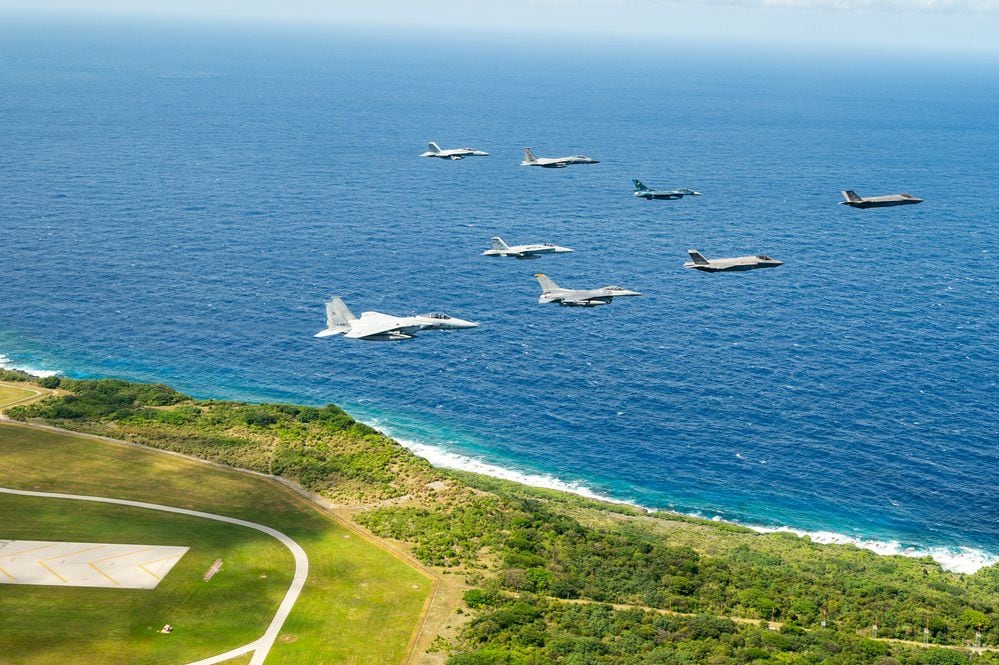

China has modernized its military from obsolescence into one that can now challenge the U.S. military “across the spectrum” of capabilities. At the same time, the U.S. needs to take “timely actions” to keep pace, says a report from the Government Accountability Office.
Not only has China re-tooled its military into a force that can contend with the U.S., but it also has a “willingness to exercise” its growing power, presenting a “significant” challenge to the U.S. in the long term.
While China seeks to have a “world-class” military by 2049, the report says that Chinese capabilities, particularly within “the First Island Chain,” are already significant.
“The first island chain” refers to the initial line of archipelagos out from the East Asian mainland. The “line” stretches from the Kamchatka Peninsula in the northeast to the Malay Peninsula in the southwest. The chain includes major U.S. interests and allies such as Okinawa, the Philippines, and Taiwan.
China now has the world’s largest navy and the world’s most extensive shipbuilding capability, along with mainland air defenses capable of hitting aircraft some 550 kilometers from the coast of China.
In particular, China’s development of Anti-Access/Area-Denial weapons systems represents a significant capability. That capability includes ballistic missiles capable of targeting U.S. ships, such as aircraft carriers, 1,500 kilometers from the Chinese mainland. But, the ballistic and cruise missiles that China has developed are not strictly for interdicting shipping.
According to the report, these missiles can reach Guam and the U.S. logistics and power projection assets stationed there and throughout the region, giving China the present ability to disrupt U.S. military operations west of Guam should China choose to do so.
Guam has “some of the most significant” ammunition and fuel storage capabilities in the Pacific, according to the Defense Department’s 2019 Indo-Pacific Strategy. Additionally, DoD is spending an estimated $8.6 billion, along with $3.1 billion from Japan, to bolster Guam’s position as a “strategic hub.” According to the Wall Street Journal, Guam currently hosts some 22,000 U.S. military personnel with at least another 5,000 on their way by the mid-2020s.
While China has seen a rapid advancement in weapons systems and conventional capabilities, it is also expanding this effort into the cyber and space domains, which it views as integral to success on a modern battlefield.
Currently, according to the report, China uses its cyber capabilities to not only “deter and degrade” adversarial operations but to “exfiltrate” information “from the U.S. defense industrial base.”
In the future, China seeks to be the “global leader in [artificial intelligence] by 2030,” which it views as a critical part of both their future military and industrial power. Also, according to the report, China views future space-based systems “as central to modern warfare.” As such, China is developing the ability to conduct anti-satellite strikes through physical and electronic means.
Although China’s military is rapidly modernizing and represents a “pacing threat,” it is still facing several challenges, many of them internal. Among these are international and regional turmoil, such as an ongoing border dispute with India, terrorism, natural disasters, and epidemics.
Additionally, according to the report, while rapidly modernizing its military, China has yet to integrate these upgrades into its operational forces fully. The Pentagon says this causes significant “gaps and shortcomings” in how China could wage war. Additionally, China has yet to fight a war with its “current suite of capabilities,” leaving them largely untested.
To account for and mitigate China’s growing military capability, the GAO recommends that DoD prioritize several areas.
Of primary concern is the readiness of the U.S. military. According to the report, which discussed domains, not individual services, the only DoD domain that increased in total readiness between 2017-2019 were ground forces. This finding is based on an annual GAO report, released in April 2021, analyzing DoD readiness across the five operational domains spelled out in the National Defense Strategy.
The current GAO report addressed three specific domains:
- The “ground domain” increased in both resource and operational readiness.
- Air, space, and cyber domains increased in resource readiness but decreased in operational readiness.
- The “sea domain” decreased in both resource and operational readiness. GAO cited limited shipyard capacity for maintenance as the primary challenge to readiness within the Navy.
In 2020, according to this week’s GAO report, the average U.S. Navy ship was undermanned by 15 percent, while attack submarines, a critical reconnaissance, and deterrent asset, lost some 10,000 operational days between 2008-2018. Additionally, the Navy is in “the early stages” of determining how to repair damaged ships should a war break out in the Pacific.
In addition to military readiness, the GAO offered policy recommendations to DoD so that deterrence can be maintained and “help prevent conflict.”
These include ensuring that DoD is poised to maintain supply chains across the Pacific, ensure that DoD cyber networks are protected from “key cyberattack techniques,” while protecting and updating space-based systems to “ensure warfighters have needed communications tools in the future.”
“For the U.S. to be poised for success in facing threats from China, DoD will need to take timely actions and congressional oversight will be important as these efforts proceed,” the report concludes.
James R. Webb is a rapid response reporter for Military Times. He served as a US Marine infantryman in Iraq. Additionally, he has worked as a Legislative Assistant in the US Senate and as an embedded photographer in Afghanistan.



Be the first to comment